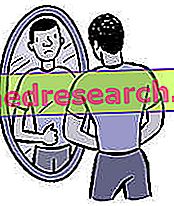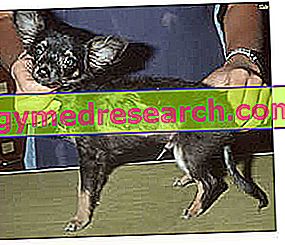In collaboration with Dr. Eleonora Roncarati
The struggle between food and body, between nature and culture, unites several disorders; those most studied are Food Behavior Disorders (DCA), such as anorexia, bulimia and binge eating disorder, but recently another psychopathology is spreading which mainly affects the male sex and has several elements in common with the disorders mentioned above: it is muscle dysmorphism or bigorexia or inverse anorexia .

The element that unites these disturbances is the obsessive attention to one's body image which is however perceived in a distorted way ( bodily dispercussion ). However, it should be emphasized that muscular dysmorphism does not belong to the group of DCAs [in the Diagnostic Statistical Manual IV ° edition (DSM IV °), DCA and Body Dysmorphism Disorder are treated as different psychopathologies], but it represents a different psychopathology, in which to arouse concern and discomfort is not the entire body (the entire physical form), but a specific part (nose, mouth, arms, muscle mass etc.) or even a physiological reaction (blushing, sweating etc.), which it is perceived as excessive or defective; furthermore, the concern may concern several districts simultaneously.
The construction of the image becomes a project, an objective and a constant practice, in which the focus on the body (or on certain parts of it) and the search for muscularity (closely linked to dissatisfaction with one's appearance) are risk factors fundamental but not sufficient for the development of muscular dysmorphism.
Diagnostic criteria for bodily dysmorphism disorder
- Concern for a supposed defect in physical appearance; if there is a small anomaly, the importance that the person gives is far too great.
- The concern causes clinically significant distress or impairment in social, occupational or other important areas .
- The concern is not better attributable to another mental disorder (dissatisfaction with body shape and measures in anorexia nervosa).
In DSM-VI it is specified that:
- The essential feature of Body Dysmorphism Disorder is concern for a defect in physical appearance (criterion A). The defect can be imaginary or, if there is a small physical anomaly, the subject's concern is far too great.
These defects may include: face, head, hair more or less thick, acne, paleness or redness, sweating, asymmetries or facial disproportion or excessive hair. Other common concerns are shape, size or some other aspect of the nose, mouth, eyes, ears, teeth, jaw. However, every other part of the body can become a cause for concern (legs, belly, hips, arms etc ...), as well as global body measurements, build and muscle mass.
- Unlike normal concerns about physical appearance, the concern for the physical aspect in body dysmorphism involves excessive expenditure of time, and is associated with significant distress or impairment in social, occupational or other important areas (criterion B) .
People with this disorder therefore experience great discomfort with their supposed deformity, often describing their concerns as "intensely painful", "tormenting" or "devastating". Their concerns are so difficult to control that they often can't resist them; as a result they spend many hours a day thinking about their "defect", to the point that these thoughts can dominate their lives . In addition to "thinking", frequent frequent defect control, either direct or through a reflective surface (mirror, shop windows, etc.) is also manifested.
These feelings of conscious shame can lead to avoiding situations of work, school or social contact with consequent: social isolation, leaving school and work or avoiding job interviews or working below their potential.
- Subjects with this disorder tend to compare the "bad" part of their body with that of others.
- There may be frequent requests for reassurance about the defect, which however only bring temporary relief.
- Behaviors that aim to improve the defect include exercise (eg weight lifting) and diet. The physical exercise associated with dysmorphism is excessive and compulsive, therefore different from healthy exercise: men with body dysmorphism exercise compulsively in order to increase muscle mass but the image they see in the mirror is never satisfactory.
It is possible to say that even in males dissatisfaction with their physical appearance can encourage unhealthy behavior (such as recourse to incongruous diets, excessive and compulsive exercise, abuse of supplements or steroids) but in itself is not a symptom of psychiatric interest ; it becomes pathological when the subject reaches an absolute conviction of his own deformity, perceived as so evident that it cannot be aroused in others if not disgust and derision .
The anxiety and worry that ensue lead to a disturbance of social functionality (ie great difficulty in social relations). [reference text: Body Building. Athletes fighting with the body. Doping, sports and muscular dysmorphophobia ]
Bibliography:
- ANTIBODY. Diet, fitness and other prisons - Luisa Stagi - Franco Angeli, Milan, 2008.
- Body Building. Athletes fighting with the body. Doping, sports and muscular dysmorphophobia - Sofia Tavella -Quattroventi, Urbino 2008.
- DSM IV-TR Diagnostic and Statistical Manual of Mental Disorders; Fourth Edition, Text revision - Washington, DC, American Psychiatric Association, 2000.



